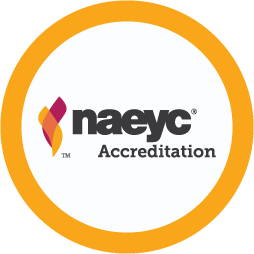Creating a Yes! Environment: Supporting Creativity and Exploration

You are here
After several years as a preschool teacher, I became tired of saying no: “No, you can’t put the blocks in the sandbox,” “No, you can’t have another snack now,” “No, you can’t use your elbow as a paintbrush.” I started to wonder: why not? Why not learn about constructing on sand? Why not have another snack—isn’t that better than trying to learn while hungry? Why not add big elbow dots to a painting? So I decided to create a “Yes!” environment.

A yes environment does not mean never saying no; no can be necessary for health and safety reasons. What’s important about a yes environment is setting up your classroom to promote exploration and asking yourself why you’re stopping a particular behavior. Saying yes as often as possible empowers children to make positive choices and have more control in their daily lives. It builds high-quality teacher–child relationships, limits teacher intrusion, increases authentic learning experiences, and promotes independence and self-esteem.
Any behavior demonstrates a desire to meet a need: for example, a child who runs in the classroom may have excess energy and need a way to use it. As educators, we can step back and evaluate what need is being met by a behavior that we want to stop. Instead of saying no, can we say yes? If not, let’s off er alternatives. It’s our job to be investigators, discovering the needs behind behaviors, and to be guides, creating activities and environments that safely meet those needs.
This list can help guide you in creating your own yes environment.
-
Take a “child tour” around your classroom. Crouch low or walk on your knees (if possible) to get a sense of the room from a child’s perspective. What catches your eye? What is accessible and what is out of reach? What draws you in? Where are children’s paintings hanging? Materials located? Books placed? Anything within view should be accessible to children (within reasonable limits). If you do not want children using something, move it!
-
Examine your comfort zone. Identifying the behaviors that make you uncomfortable can help you understand why you say no. Maybe loud noises rattle you—does the early morning band in your preschool room make your hair stand on end? Maybe you’re a neatnik—does the sight of children rifling through the book basket make you cringe? Talk with your colleagues about the behaviors and activities that make you want to say no. Do they agree that those behaviors need to be addressed? If so, do they see ways you can redirect the children?
-
Keep in mind the two Ds. When it comes to limiting and redirecting a behavior, first determine if the behavior is dangerous or destructive. If an activity is unsafe (for the child or others) or destructive to the classroom environment, it calls for action. Stop and think about the need driving a child’s behavior, and try to come up with an alternative action instead of just saying no.
-
Watch and wonder. After determining that a behavior is not dangerous or destructive, take a step back. Watch what is happening before you intervene. Wonder with children, asking questions as an observer—not as an intruder. Asking a child why she is doing something or why she needs a particular item can reveal her thought process. Watching and wondering also give children opportunities to find their own alternative behaviors.
-
Be active and engaged, but not intrusive. Being an active observer means you are watching what is happening as it occurs but not intervening unless necessary. This helps you see bothersome behaviors as they arise and gently guide children toward more positive interactions. Being engaged helps you understand a behavior as it occurs. Maybe that banging in the block corner stems from the need to scare away a shark. If you’re working across the room, you may consider the banging disruptive rather than imaginative—and be unprepared to inspire the children to find new ways to scare away sharks. Being active and engaged makes you a partner in play and exploration with children, rather than a disciplinarian.
-
Be an investigator. Keep notes on your observations of children’s play and conversations. These can be extremely helpful in determining why a child is using a certain behavior and in identifying a pattern you may need to address.
- Have fun! In a yes environment, both the teacher and the children freely explore and play. Take pleasure in your time each day with the children and relish the wonder and excitement that come from learning together.

STANDARDS 1: RELATIONSHIPS; 4: ASSESSMENT OF CHILD PROGRESS
1F: Promoting Self-Regulation
4D: Adapting Curriculum, Individualizing Teaching, and Informing Program Development
Photographs: © Getty Images
Angela Elkins is the director of learning and teaching at Framingham Centre Nursery School, in Framingham, Massachusetts, and has been a preschool teacher for 15 years.